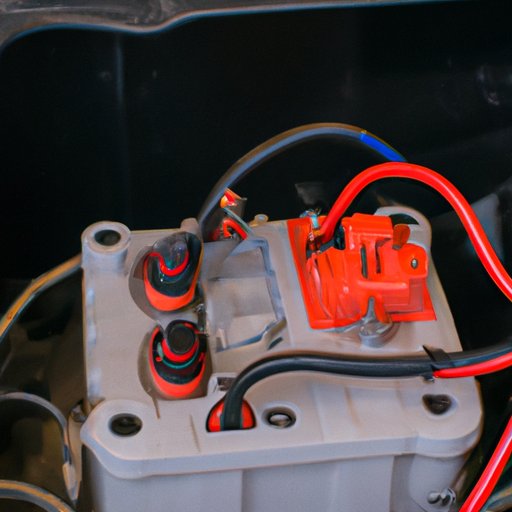Introduction
Your car’s starter is an essential component of its engine system. It helps to get the engine going when you turn the key in the ignition. When it stops working, it can leave you stranded. But how do you know if the starter is bad?
In this article, we will discuss the symptoms of a bad starter, as well as some simple diagnostic tests that you can perform to determine whether or not the starter is indeed bad. By the end of this article, you’ll have the knowledge and confidence necessary to diagnose any issues with your car’s starter.
Check the Battery Voltage
One of the most common causes of starter failure is a low or dead battery. Before you start troubleshooting, you should check the battery voltage. This can be done with a digital multimeter.
To check the battery voltage, first set the multimeter to DC volts. Then connect the red lead to the positive terminal of the battery and the black lead to the negative terminal. The reading should be between 12.6 and 14.4 volts. If it is lower than this, then the battery may be low and needs to be recharged or replaced.
Listen for Unusual Sounds
If the battery voltage is fine, then you should listen for any unusual sounds coming from the starter. These could be grinding, buzzing, or clicking noises. If you hear any of these, then the starter may be failing.
If you do hear a sound, you should try to determine where it is coming from. If it is coming from the starter itself, then the starter is likely failing. If it is coming from elsewhere, then the issue may be related to something else, such as the alternator or a loose wire.
Examine the Starter Solenoid
The starter solenoid is located on top of the starter and is responsible for engaging the starter motor. If the solenoid is damaged, then the starter will not be able to engage and the engine will not start.
To inspect the starter solenoid, first locate it on top of the starter. Then check for any signs of damage, such as corrosion or cracks. If there is any damage, then the solenoid may need to be replaced.
Check the Ignition Switch
The ignition switch is responsible for turning the starter on when the key is turned. If the switch is faulty, then the starter will not be able to engage and the engine will not start.
To test the ignition switch, use a digital multimeter. Set the multimeter to ohms and connect the leads to the terminals on the switch. The reading should be between 0.5 and 1.5 ohms. If it is not, then the switch may need to be replaced.
Inspect the Starter Motor
The starter motor is responsible for turning the engine over and engaging the flywheel. If the starter motor is worn out or damaged, then it will not be able to turn the engine over and the car will not start.
To inspect the starter motor, first locate it on the engine. Then check for any signs of wear and tear, such as cracks or frayed wires. If there is any damage, then the starter motor may need to be replaced.

Test the Starter with a Jump Start
Another way to test the starter is to use a jump start. To do this, attach the positive lead of the jumper cable to the positive terminal of the battery and the negative lead to the negative terminal. Then start the engine and let it run for a few minutes.
If the starter is working properly, then the engine will start right away and stay running. If the starter is bad, then the engine will struggle to start or not start at all.
Have a Professional Diagnose the Problem
If you are still unsure whether or not the starter is bad, then it is best to have a professional diagnose the problem. A qualified mechanic will be able to quickly identify the cause of the issue and recommend the best course of action.
When choosing a mechanic, make sure to ask questions about their experience and expertise. Ask them how long they have been in business and what kind of training they have. Also, be sure to ask for references from other customers so you can get an idea of their work quality.
Conclusion
Diagnosing a bad starter can be tricky, but with the right knowledge and tools, it can be done. In this article, we discussed the symptoms of a bad starter, as well as some simple diagnostic tests that you can perform to determine whether or not the starter is indeed bad. We also discussed the benefits of having a professional diagnose the problem.
By following the steps outlined in this article, you should be able to diagnose any issues with your car’s starter.
(Note: Is this article not meeting your expectations? Do you have knowledge or insights to share? Unlock new opportunities and expand your reach by joining our authors team. Click Registration to join us and share your expertise with our readers.)
